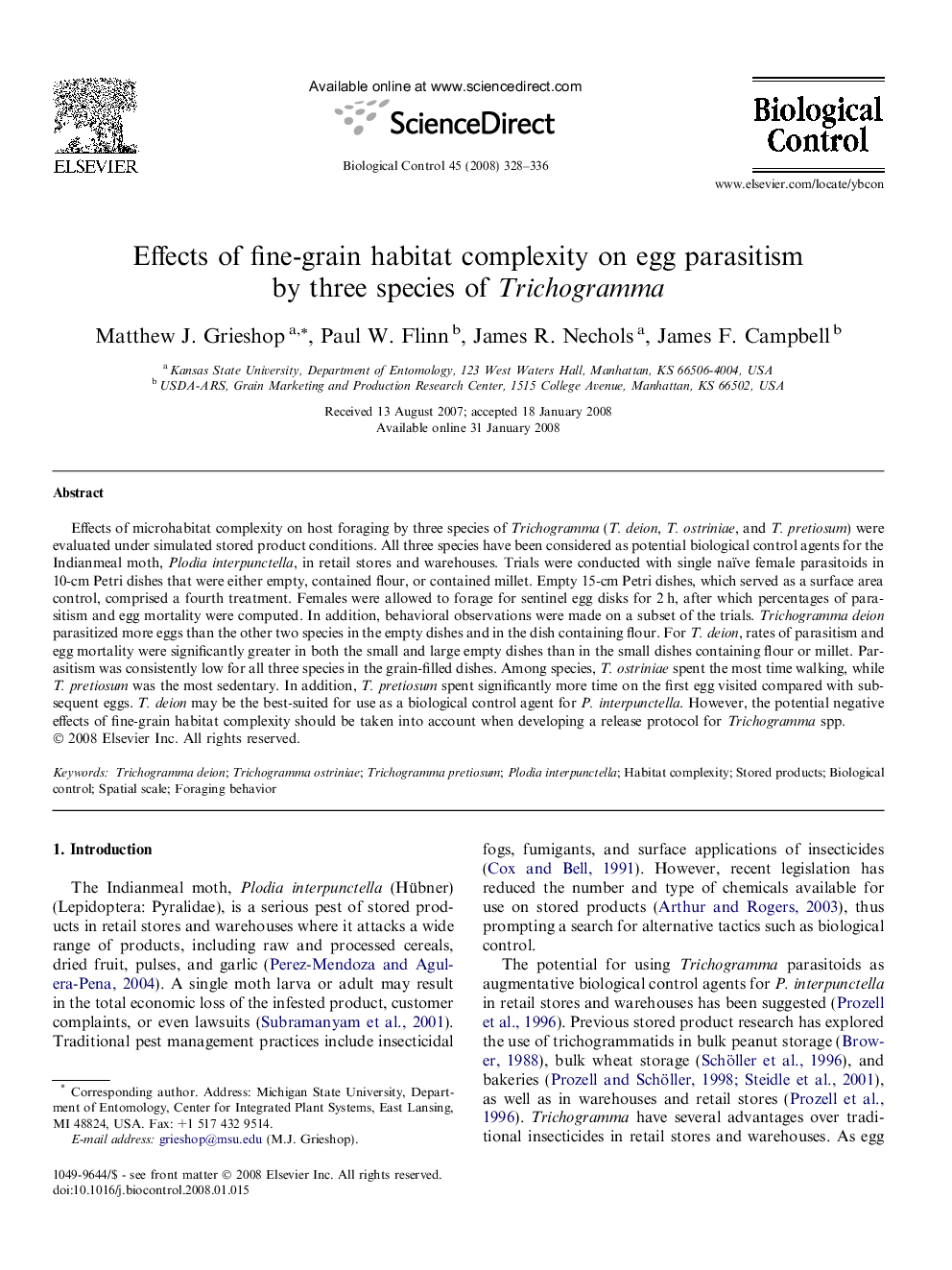| Article ID | Journal | Published Year | Pages | File Type |
|---|---|---|---|---|
| 4504963 | Biological Control | 2008 | 9 Pages |
Effects of microhabitat complexity on host foraging by three species of Trichogramma (T. deion, T. ostriniae, and T. pretiosum) were evaluated under simulated stored product conditions. All three species have been considered as potential biological control agents for the Indianmeal moth, Plodia interpunctella, in retail stores and warehouses. Trials were conducted with single naïve female parasitoids in 10-cm Petri dishes that were either empty, contained flour, or contained millet. Empty 15-cm Petri dishes, which served as a surface area control, comprised a fourth treatment. Females were allowed to forage for sentinel egg disks for 2 h, after which percentages of parasitism and egg mortality were computed. In addition, behavioral observations were made on a subset of the trials. Trichogramma deion parasitized more eggs than the other two species in the empty dishes and in the dish containing flour. For T. deion, rates of parasitism and egg mortality were significantly greater in both the small and large empty dishes than in the small dishes containing flour or millet. Parasitism was consistently low for all three species in the grain-filled dishes. Among species, T. ostriniae spent the most time walking, while T. pretiosum was the most sedentary. In addition, T. pretiosum spent significantly more time on the first egg visited compared with subsequent eggs. T. deion may be the best-suited for use as a biological control agent for P. interpunctella. However, the potential negative effects of fine-grain habitat complexity should be taken into account when developing a release protocol for Trichogramma spp.
